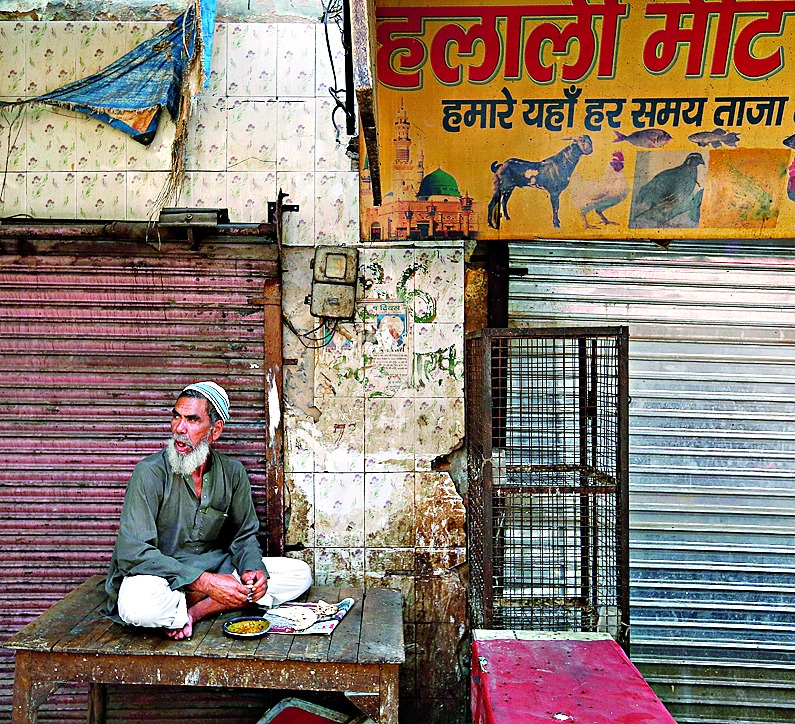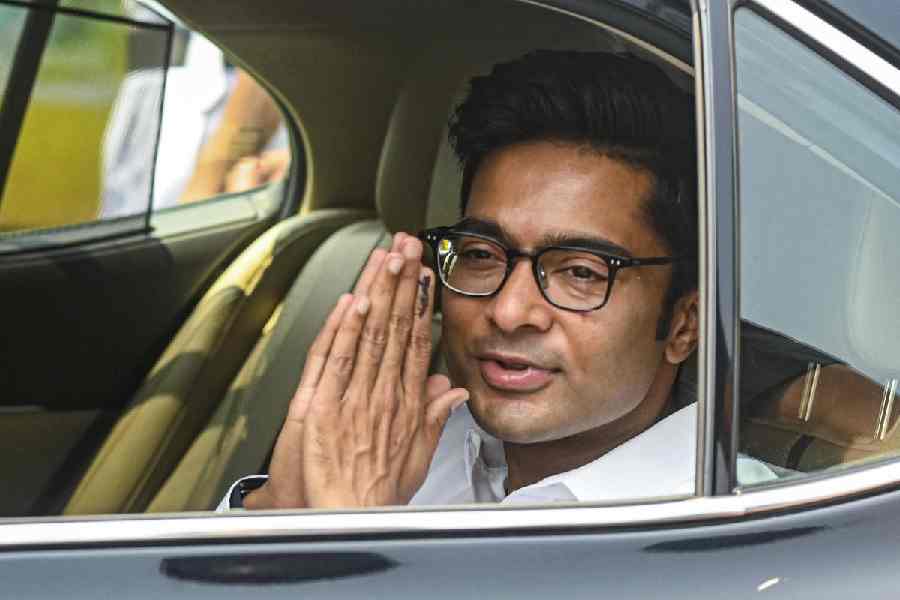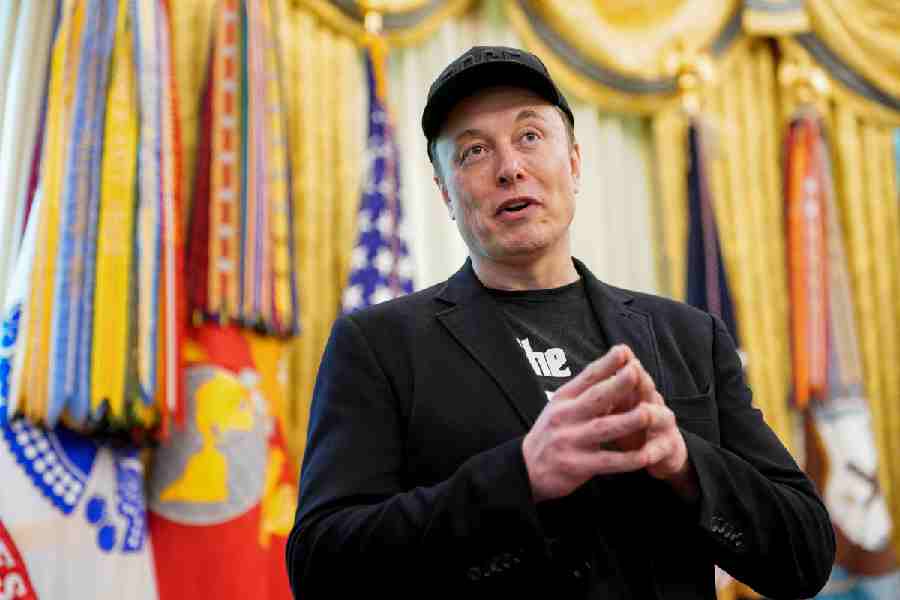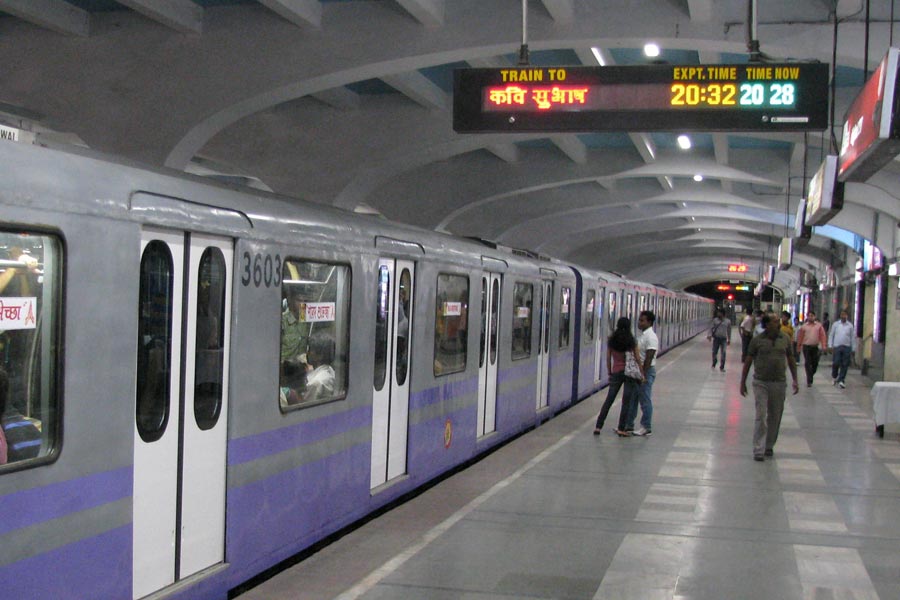
As a clumsy child I was often threatened with banishment to Gubbay House. I didn't know then what that meant but since there was a Gubbay at school, realized there was a Jewish connection. Another childhood memory concerns an aunt who probably felt she deserved a grander destiny since she was told in girlhood she was " Yehudir moton sundari... beautiful as a Jewess". I mentioned this once to a middle-aged Jewish woman in Prestwich, Manchester, which has had a significant Jewish population since the 18th century. "What are we doing here then?" she exclaimed. "Let's pack our bags and go to Calcutta!"
That option ceased long ago. The cosmopolitanism Jael Silliman, author, scholar, and women's rights activist, invoked in a lively illustrated talk on the city's Jews belongs to an age when trade and shipping flocked to Calcutta, industry boomed in its hinterland, and Bengali merchant princes built Palladian villas blending the opulence of European drawing rooms with the piety of puja dalans. Prosperous Bengali patriarchs welcomed beautiful Yehudinis with open arms. Bengal's economic decline isn't the only reason why an entrepôt that was bracketed with Rangoon, Singapore and Hong Kong has shrunk into a local harbour. The change is of mindset. India as a whole is retreating from enlightened universalism into mofussil majoritarianism. A Big Ben replica is as dehati as Narendra Modi's boasts about Barack Obama.
A conversation in London with the Reverend Michael Scott, man of god and social crusader, resurrected another aspect of vanished Calcutta: it recalled a family divorce when I caught hushed whispers about the husband admitting in court to patronizing a mysterious place called Karaya Road. It wasn't an address I heard mentioned again until decades later Michael told me that while serving as chaplain of St Paul's Cathedral during the Second World War, he frequented the Communist Party of India office in Karaya Road. The police spotted his car and informed his boss, the Bishop of Calcutta, in whose Chowringhee mansion he lived. The bishop hummed and hawed at breakfast one morning, eventually murmuring that he realized the flesh was weak and youth had to sow its wild oats, but it would be more prudent to take a taxi. Red-light Karaya specialized in White Russian prostitutes.
Whether or not Calcutta also straddled the revolutionary road from Peking to Paris, Selina Perera, wife of a prominent Sri Lankan Trotskyite, found refuge here with the Bolshevik-Leninist Party of India, no doubt hoping to groom an army of Bengali revolutionaries. The CPI's second congress held in Calcutta is identified with insurgencies in Tripura, Telangana and Travancore. Some of my Singaporean friends associated the "Calcutta Conference", also in February 1948 but organized by the World Federation of Democratic Youth and the International Union of Students, with the Malayan and other South-east Asian guerilla wars. Communism was also globalization.
The British presence in what Curzon called "a European city set down upon Asiatic soil" was naturally strongest even 20 years after Independence. But although they presented a solid front to the world, they were riven within with slander and suspicion. If anything worried Calcutta Europeans more than "a touch of the tar brush", it was the hint of lowly origins in Britain. I must have caused intense embarrassment to a burra memsahib by sending her in my innocence a beer mat from the pub near Aldershot where her jovial father pulled the taps behind the bar. He had singled me out as the only Indian in a crowd of boys on a pub crawl and given me the coaster with a scribbled message for his daughter. She didn't acknowledge it.
Terms like "managing agency", "covenanted hand" and "packet lunch" denoted an aspirational way of life for many outside the haven of anglicized privilege. Andrew Yule, the largest managing agency of them all, was also the most thrifty. Sir David Yule's office was open 24 hours, four sturdy durwans sleeping across the doorway at night. Taking King George V to see a jute mill, he picked up a strand of jute from the jetty's planks, mightily displeased at such waste. He would have been in trouble today: Bhaskar Mitter, Andrew Yule's former chairman, told me their barges had secret cavities packed with cash to pay jute growers.
There were also enough Greeks to raise money to fight the Ottomans, and enough Chinese to plot for both Communist China and Taiwan. India's biggest pre-Second World War Japanese community was in Calcutta. Afghans and Armenians were part of the kaleidoscope. No heritage is entirely unmixed and the kaleidoscope also produced the Gariahat Excise Conspiracy case, bristling with names like Gubbay (a different one) and Ezekiel. We are so used to spurious Scotch that it used to be joked that more Scotch was drunk in India than Scotland ever produced. The Gariahat conspirators not only manufactured "Scotch" but devised an ingenious way of substituting it for the genuine stuff in a bonded warehouse by acquiring the premises next door and burrowing through the dividing wall.
Calcutta's decline reminded a European visitor of Alexandria in the Fifties with plate glass shop windows exposing only dusty emptiness. Unburied remains of that grandeur litter the landscape. Fort Barlow has never heard of the Metal Box trays my impecunious but talented friend Brojogopal Manna refused to decorate because glasses of liquor would profane his art. Brojogopal turned down the Taj Mahal Hotel's infinitely more lucrative invitation to copy old Bombay scenes for their rooms because he drew only from life. Even the public works department's monstrosities haven't obliterated Galstaun's memory from what is called "Nizam Palace" (picture). The steep stairs, dingy cubicles and narrow passages of Firpo's Market, a shabby commercial block in Lower Circular Road sacrilegiously named Lords, and the "For Sale" sign on Grindlays' hallowed 19, Netaji Subhas Road branch speak of the world the Jews abandoned. Even Tibetans have fled Calcutta. The city Huseyn Shaheed Suhrawardy wanted as the capital of independent Bengal, a free port or an international condominium because, he claimed, it had been built by foreign resources and was largely inhabited by people from other provinces with no roots in the soil, is retreating into a Bengali backwater as India regresses behind Hindutva blinkers. The cultural elasticity that made foreigners feel they belonged is gone.
Our friend, the late Sally Solomon, descendant of Shalom Aaron Cohen of Aleppo, who founded Calcutta's Jewish community in 1797, wrote two delightful memoirs of life in India, Hooghly Tales: Stories of Growing Up in Calcutta under the Raj and Where Rivers Meet: Memories of Madras 1948-1972. "Are we English?" Sally wondered. "Are we Indian?" She didn't feel either. She couldn't relate to European Jewish refugees who had suffered the Holocaust. Being a Jew wasn't enough to be an Israeli, she realized. When they emigrated to Britain in 1972, Sally made her husband promise to buy a house in India. Returning to Madras in 1998, she knew it was no longer home.
Are Jews a race or a religion is of course the eternal dilemma. There are also smaller questions. Sally's " Naanee" in Grants Lane wore ankle-length muslin, smoked a hookah, used a silver pan box and and spoke Arabic. Jael's talk began with a photograph of a Jewish family in turban and djellaba. We know from books that before moving to Hong Kong, the Sassoons held a family council and decided to retain the old-style attire and appearance. We also know that the Sassoon who went to Hong Kong changed into European attire, moved to London and became English. When did Indian Jews decide to turn their back on their Baghdadi inheritance and identify with the Anglo-Indian and off-white world? Second, and more intriguingly, why was it fashionable for Bengali men to have Jewish mistresses? I never got round to asking Sally.










